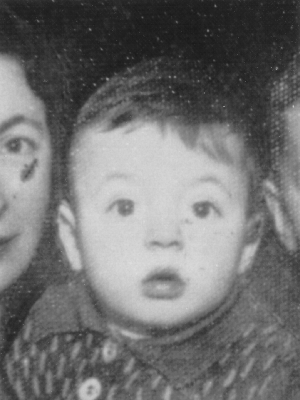
Isac, the younger son of Ana and Abram Brauman, lived in the port city of Liepaja, Latvia, on the shores of the Baltic Sea. His father, a tailor, managed to support the family. In 1935, the city had a Jewish population of 7,379 out of a total population of 57,098. Latvia was annexed to the Soviet Union in 1940. On June 29, 1941, a week after the invasion of Russia, the Germans occupied Liepaja. Isac was four years old.
The Germans immediately instituted anti-Jewish measures, among them decrees ordering the wearing of the yellow star and a draft for forced labor. Jewish males age 16 to 60 were required to report daily at the city square. Of those who reported, some were sent to forced labor, and others were taken to prison. Those who failed to report were arrested in their homes, or on the street, and were murdered.
In August 1941, most Jews were forced to work for the German army. Many Jews had their money, furniture, and household goods confiscated and were forced from their homes. Jews considered unfit were murdered, including residents of the old-age home. By November 1941, half of the Jewish population had been killed.
On December 13, 1941, a decree was issued ordering the Jews to stay at home on December 15 and 16. On the night of December 14, Latvian police, working under German orders, rounded up Jews in their homes and took them to prison. The few holders of work permits and their families were released, but most of the other Jews were taken to a small fishing village to be murdered. Ordered to undress in freezing temperatures, they were led, in groups of 10, to the edge of already prepared trenches. There they were shot by firing squads, two gunmen for each victim. Women were told to hold their babies against their shoulders to make them easier targets. Over 2,700 Jews, including women and children, were murdered during this action.
Two similar mass murders took place in February and April 1942. After that, the 805 Jews left in the city were confined to an overcrowded, sealed off ghetto. The ghetto was emptied in October 1943. The residents were taken to Kaiserwald concentration camp, where most died.

